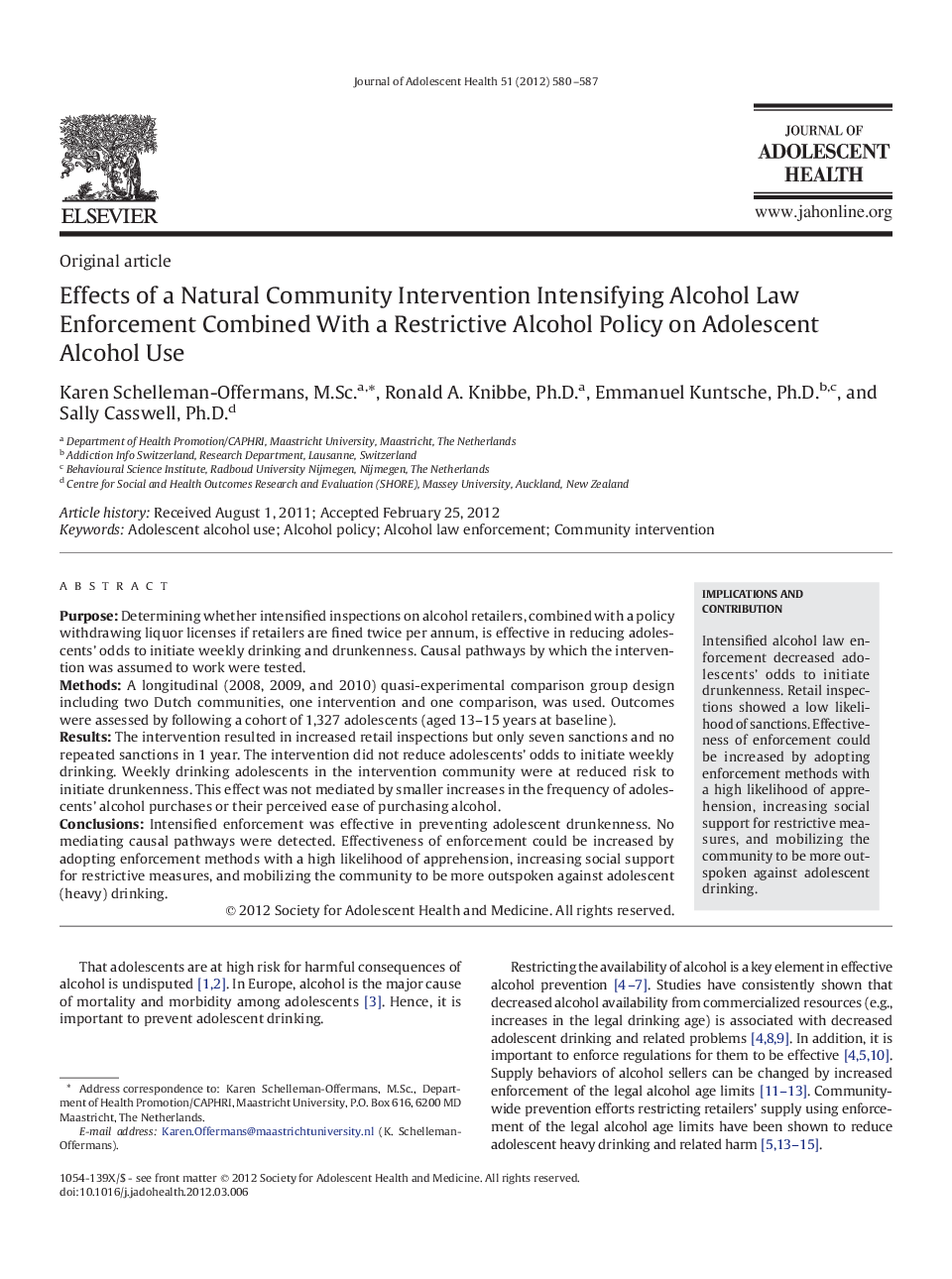| Article ID | Journal | Published Year | Pages | File Type |
|---|---|---|---|---|
| 1080281 | Journal of Adolescent Health | 2012 | 8 Pages |
PurposeDetermining whether intensified inspections on alcohol retailers, combined with a policy withdrawing liquor licenses if retailers are fined twice per annum, is effective in reducing adolescents' odds to initiate weekly drinking and drunkenness. Causal pathways by which the intervention was assumed to work were tested.MethodsA longitudinal (2008, 2009, and 2010) quasi-experimental comparison group design including two Dutch communities, one intervention and one comparison, was used. Outcomes were assessed by following a cohort of 1,327 adolescents (aged 13–15 years at baseline).ResultsThe intervention resulted in increased retail inspections but only seven sanctions and no repeated sanctions in 1 year. The intervention did not reduce adolescents' odds to initiate weekly drinking. Weekly drinking adolescents in the intervention community were at reduced risk to initiate drunkenness. This effect was not mediated by smaller increases in the frequency of adolescents' alcohol purchases or their perceived ease of purchasing alcohol.ConclusionsIntensified enforcement was effective in preventing adolescent drunkenness. No mediating causal pathways were detected. Effectiveness of enforcement could be increased by adopting enforcement methods with a high likelihood of apprehension, increasing social support for restrictive measures, and mobilizing the community to be more outspoken against adolescent (heavy) drinking.
